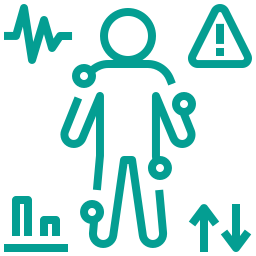Minimally Invasive Lumbar Decompression (MILD)
Minimally Invasive Lumbar Decompression (MILD) is a safe and effective alternative for treating lumbar spinal stenosis, offering significant pain relief with minimal downtime. This outpatient treatment for lumbar spinal stenosis addresses the root cause of pain by removing excess ligament tissue that compresses the spinal canal, helping to restore mobility.

What is Minimally Invasive Lumbar Decompression (MILD)?
Minimally Invasive Lumbar Decompression (MILD) is a medical procedure designed to relieve pressure on the spinal nerves caused by lumbar spinal stenosis (LSS). It involves removing small portions of thickened ligament tissue in the lower back using specialized tools, reducing nerve compression and alleviating pain. Unlike traditional open spine surgery, MILD is performed through a tiny incision, requiring no implants, general anesthesia, or stitches.
What Conditions Can Be Treated with MILD?
MILD is primarily used to treat lumbar spinal stenosis (LSS), a condition characterized by the narrowing of the spinal canal, which can lead to pain, numbness, tingling, and weakness in the lower back and legs. It is particularly beneficial for patients who experience difficulty standing or walking for extended periods due to nerve compression.
- Lumbar Spinal Stenosis (LSS) – A narrowing of the spinal canal that puts pressure on the spinal nerves, leading to pain, numbness, and difficulty walking.
- Neurogenic Claudication – A condition where patients experience pain, weakness, or tingling in the legs, especially while walking or standing, due to compressed nerves in the lower back.
- Thickened Ligamentum Flavum – Overgrowth of the ligament in the lower back that causes nerve compression and contributes to spinal stenosis symptoms.
- Chronic Lower Back and Leg Pain– Persistent discomfort caused by nerve compression that limits mobility and affects the quality of life.
- Difficulty Standing or Walking– Patients who struggle with standing or walking for prolonged periods due to spinal nerve compression can benefit from MILD, as it relieves pressure and restores mobility.
What to Expect During the MILD Procedure
Step-by-Step Process:
1

Preparation
The patient is given a local anesthetic and mild sedation to ensure comfort during the procedure.
2

Procedure
A small incision (about the size of a baby aspirin) is made in the lower back. Using fluoroscopic guidance, a specialized instrument is inserted to remove small pieces of ligament and bone that are compressing the spinal canal.
3

Completion
Once decompression is achieved, the instrument is removed, and the incision is closed with a bandage. No stitches are required.
4

Recovery
Most patients can go home the same day and resume light activities within a few days. Full recovery varies but is generally faster than traditional surgery.
Benefits of Minimally Invasive Lumbar Decompression (MILD)
Minimally Invasive
No general anesthesia, implants, or stitches required
Outpatient procedure
Patients can return home the same day.
Quick recovery
Many experience significant pain relief within days.
Preserves spinal stability
Unlike other surgeries, MILD does not require spinal fusion or hardware.
High success rate
Studies show lasting improvement in mobility and pain relief.
Risks and Side Effects of Minimally Invasive Lumbar Decompression (MILD)
While MILD is generally considered safe, potential risks include:
- Temporary soreness at the incision site
- Minor bleeding or infection (rare)
- Temporary numbness or tingling
- Less common complications such as nerve damage or inadequate symptom relief
These risks will be thoroughly discussed during your consultation appointment.
F.A.Q
General Questions
The procedure typically lasts about an hour.
No, MILD is an outpatient procedure, and patients go home the same day.
Many patients can return to light activities within 24-48 hours, with full recovery in a few weeks.
Many insurance plans, including Medicare, cover the MILD procedure. It's best to check with your provider.
Clinical studies show that MILD provides long-lasting pain relief and improved mobility for many patients, with a high success rate.
Share this page:
Facebook
LinkedIn
Twitter
